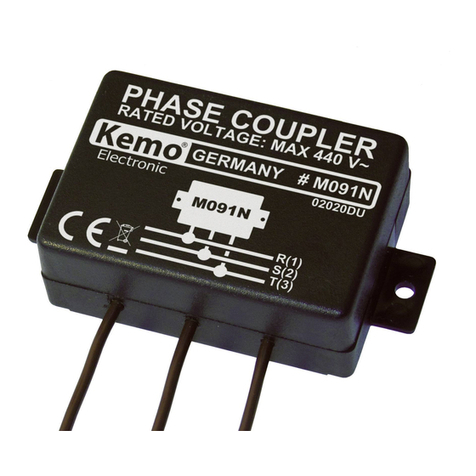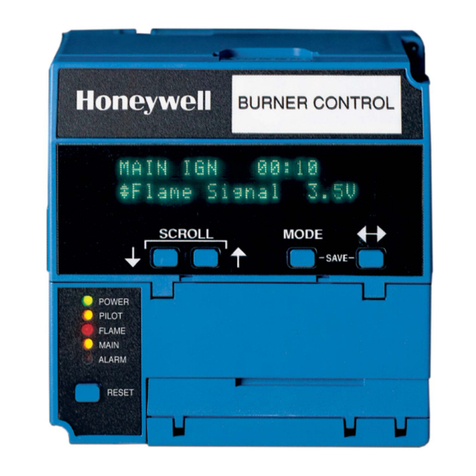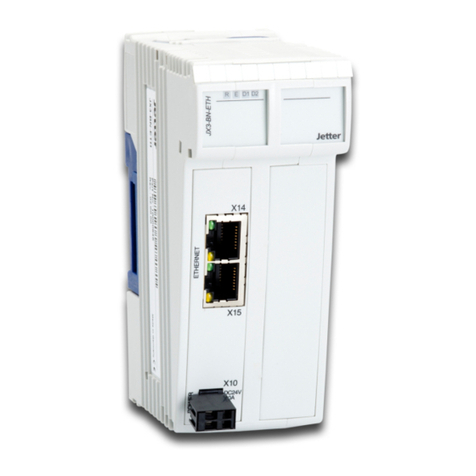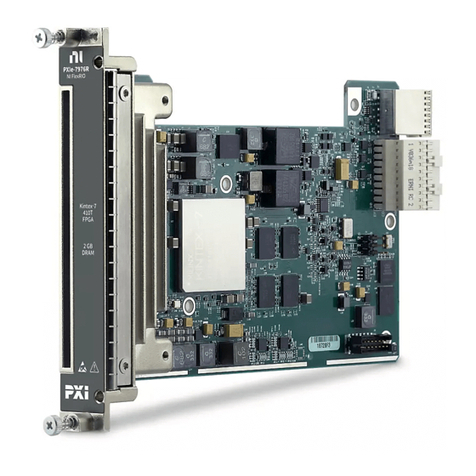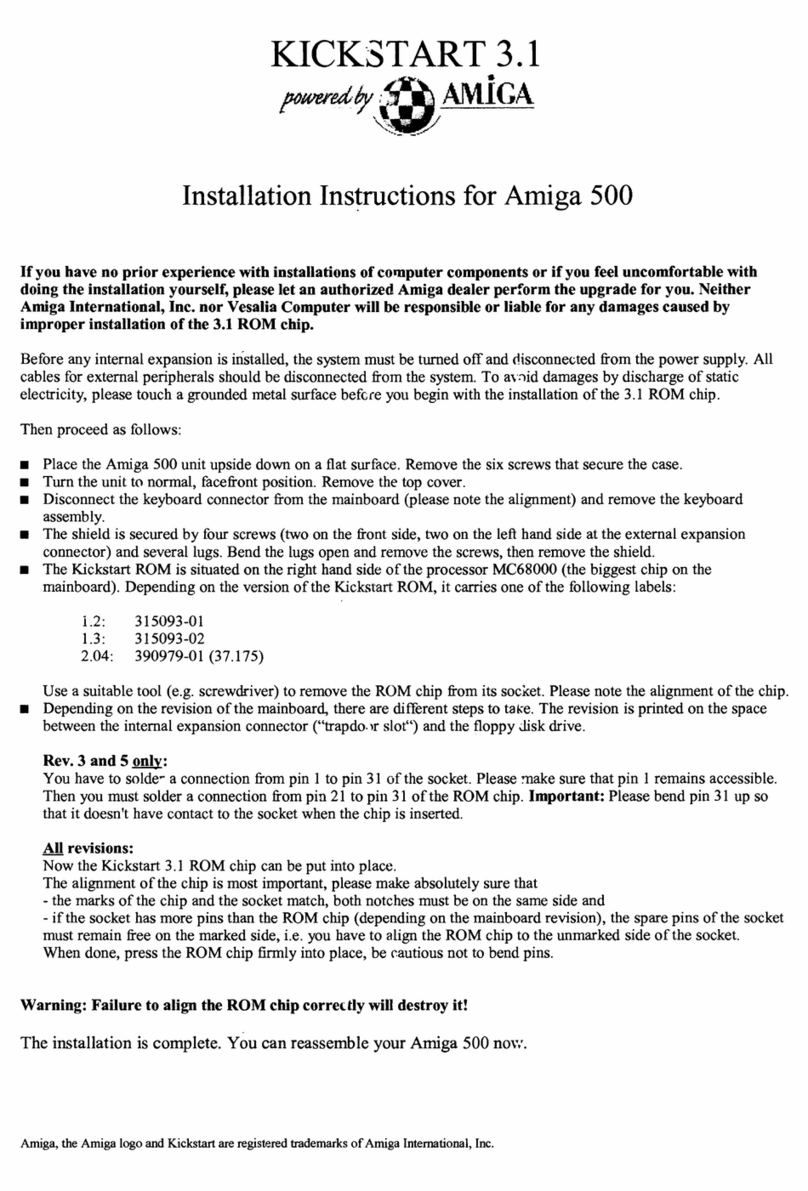DAS SOLAR WH108PA User manual

Module User Manual

Applicable product list
Product type
Single glass product
WH108PA
WH144PA
DH108PA / DH108NA
DH144PA / DH144NA
Double glass product
Product model
DAS-MP-023-A01-V02
User Manual of DAS Solar Modules

1 Introduction to user manual 1
1.1 Disclaimer 1
1.2 Scope of liability 1
2 Precautionary safety measures 2
2.1 Warning 2
2.2 General safety 2
2.3 Conventional safety 3
2.4 Operating safety 4
2.5 Fire safety 4
3 Precautions for handling, storage and transport 5
3.1 Turnover precautions 5
3.2 Storage precautions 5
3.3 Unloading mode and precautions 6
3.4 Project site transport 9
3.5 Secondary transport 19
4 Unpacking mode 11
4.1 Enclosed unpacking 12
5 Introduction to installation method 14
5.1 Introduction to installation environment 14
5.2 Module tilting angle 15
5.3 Bolt installation 16
5.4 Fixture installation 18
6 Module wiring 21
6.1 Wiring requirements 21
6.2 Wiring method 22
6.3 Grounding connection 23
7 Module maintenance 24
7.1 Appearance inspection 24
7.2 Connector and cable inspection 25
7.3 Requirements on rinsing 25
7.4 Cleaning method 26
7.5 Post-cleaning inspection 27
8 Release and execution 27
........................................................
.......................................................................
................................................................
....................................................
..................................................................
.............................................................
................................................................
.......................................................................
..................................
.............................................
...........................................................
............................................................
................................................................
..............................................................
..........................................................
.................................................................
.........................................................
.........................................................
................................................
..............................................................
......................................................
..............................................................
.......................................................
................................................
...........................................................
............................................................
.......................................
............................................................
...................................................................
......................................................................
..............................................................
...........................................................
.........................................................................
Table of Contents
User Manual of DAS Solar Modules

1.1 Disclaimer
1. Introduction to user manual
First of all, thank you for choosing our products! This manual contains relevant information and data in connec-
tion with the installation mode and safety operation of the photovoltaic modules (hereinafter referred to as "Module")
manufactured by DAS Solar (Quzhou) Co., Ltd. . DAS Solar (Quzhou) Co., Ltd. is hereinafter referred to as "DAS
Solar". Any violation of these safety instructions may lead to casualties or property loss.
Before Module installation, installation personnel shall go through and understand these instructions. Should you
have any concerns, please contact the service department of DAS Solar or our local representative for further infor-
mation. Installation personnel shall comply with all safety precautions set out in this manual, local requirements, and
regulations of the law and authorized institutions. Prior to installation the solar photovoltaic system, installation person-
nel shall clearly understand its mechanical and electrical requirements. The operation of the photovoltaic system
requires relevant expertise, and therefore the system installation and maintenance shall be performed by qualified
personnel with professional skills and knowledge.
Please keep this manual in a secure place, and adopt it as the basis for operation, maintenance and servicing, or
use it upon resale or disposal of the Modules. DAS Solar Modules pass the tests of global detection and certification
institutions, and can be used safely provided that the requirements set out in the provisions of this manual are ob-
served. Any Module installation operator shall notify the above requirements to the end users (or consumers).
The "Module" or "PV Module" mentioned herein refers to one or more single-glass or double-glass series solar
modules. Please keep this manual for future reference.
DAS Solar reserves the right to revise this manual without prior notice. If the customer fails to comply with the
requirements set out in this manual during the installation process of the Module, the limited product warranty
offered to the customer will be invalidated. This manual is of no significance to the warranty, whether explicit or
implied. This manual doesn't contain any information in relation to any compensation plans for any losses, Module
damage or other costs arising from or in relation to the installation, operation, use and maintenance of the Module.
DAS Solar disclaims any liability for any infringement on any patent rights or third-party rights arising from the oper-
ation or use of the Module.
1.2 Scope of liability
DAS Solar disclaims any liability for any following kinds of injuries and losses, including but not limited to any
physical injuries or property losses resulted from Module misoperation Module, system installation failure, and vio-
lation of the instructions set out in this manual.
Mandatory
Otherwise the product may be damaged
or the user's personal safety may be
endangered.
Prohibited
Otherwise the product may be damaged
or the user's personal safety may be
endangered.
01
User Manual of DAS Solar Modules

2. Precautionary safety measures
Please read and understand all safety rules prior to installation, wiring, operation or maintenance of the
Module. Photovoltaic Modules may generate power energy when directly exposed to light sources, and a photovol-
taic array comprised of multiple Modules may create dangers critical electric shock or burning, thus any person
without authorization and related training shall not contact the photovoltaic Module and its wiring terminals, etc.
2.1 Warning
2.2 General safety
Please read and understand all safety rules prior to installation, wiring, operation or maintenance of the
Module. When the Module's battery is directly exposed to sunlight or other light sources, direct current (DC) can be
generated, and casualties can be caused when directly contacting any electrified part of the Module, such as wiring
terminals, regardless of whether the Module is connected.
When contacting the Module, please make sure to take appropriate protective measures, regardless of wheth-
er the photovoltaic Module is connected with the system, e.g.: Insulating tool, safety helmet, insulating gloves,
safety belt, and safety insulating boots. When you need to carry out installation, grounding, wiring, cleaning and
other operations of the Module, please make sure to use appropriate protective tools for electrical safety. Dot not
have direct contact with the Module, to avoid electric shock or injury.
Under general conditions, the open-circuit voltage and short-circuit current values practically generated by the
photovoltaic Module may exceed the corresponding values measured under the standard test conditions, thus
please comply with the requirements provided in Article 690 of the National Electric Code (NEC) to carry out rele-
vant operations. When determining the rated voltage of the Module, rated current of the conductor, and the specifi-
cation of the fuse and other controllers connected to the output end of the Module, and if the Module installation
doesn't conform to NEC standards, please consider the actual open-circuit voltage and short-circuit current at a
safety coefficient of 1.25 to the corresponding values indicated on the nameplate of the Module.
02
User Manual of DAS Solar Modules

2.3 Conventional safety
• Do not stand, tread, sit, walk or jump on the Module or Module packing.
• Keep children or unauthorized persons from approaching the installation area or storage area of the Module.
• Do not connect to or disconnect the Module when the Module generates current or external current is with
the Module. Do not use water to extinguish fire when power supply is not cut off.
• Do not install the Module in any area of any potentially inflammable gases. Do not stack heavy or edgy arti-
cles on the Module. Prevent the Module from fall off or any articles from dropping onto or colliding with the Module.
• Do not pull, scratch or bend the output cable with force, otherwise the insulating layer of the cable may be
damaged, resulting in power leakage or electric shock. Do not insert any conductive materials into the connector of
the Module. The cover of the wiring box shall be closed at all times.
• Do not damage or scratch the front or rear side of the Module to avoid adversely affecting the safety of the
Module; if you find any scratch or cutting mark on the front or rear side of the Module, please do not use or installed
the Module.
• Do not focus sunlight on the Module through mirror or lens. During the normal operating process of the
Module, Avoid the Module from being shaded by buildings, trees and chimneys.
• The front glass of the Module plays a protective role to the Module. If the front glass is damaged, the Module
may be electrically hazardous (electric shock and fire), and the Module must be replaced immediately because it
can't be repaired.
• All installation works must be in complete compliance with local regulations and corresponding domestic or
foreign electrical standards.
• All Module systems must be grounded. Please comply with the international standards of IEC and other appli-
cable standards.
• The installation works of the Module array must be performed with the protection of sunlight isolation equip-
ment, and the installation and maintenance of the Module can only be performed by qualified professionals through
insulating tools to reduce the risk of power shock.
• If battery is used by the photovoltaic system, please following the instructions of the manufacturer of the bat-
tery accessary to the Module, and make sure the battery is validated for the Module.
• It is recommended that professional operators qualified for photovoltaic system installation should be em-
ployed for the purpose of Module installation. The operation shall be performed by personnel familiar with corre-
sponding safety procedures, so as to avoid safety hazards.
03
User Manual of DAS Solar Modules

When installing the Module on roof, please comply with applicable local laws and regulations in relation to fire
safety requirements of buildings prior to installation. The roof shall be covered with a layer of fireproof materials
with appropriate grades before installation, and make sure that the Module and the installation face are completely
ventilated. Different roof structures and installation modes may affect the fireproof performance of the buildings.
Incorrect installation mode may cause fire. Use only appropriate Module components pursuant to local regulations,
such as fuse, circuit breaker, and grounding connector.
Please do not install or use the Module near open fire or inflammable and explosive articles.
• Do not privately repair the Module if the front glass is damaged.
• Do not dismantle the Module or remove any part of the Module.
• Avoid any articles from directly dropping onto or colliding with the Module.
• Do not grab the wiring box or cable to lift the Module in any case.
• Do not use any edgy tool to rub the glass of the Module, otherwise scratches will
not left on the Module.
• Do not install or handle the Module in the installation site under adverse weather
conditions such as rain, snow or strong wind.
• Avoid mistakenly use the male and female connectors, check the wiring condition,
and make sure all wires and cables are secured with the Module.
• Do not contact the wiring box or male/female connector with bare hands during
the installation process or when solar radiation is exposed to the Module.
• Do not stand or walk on the packing or Module; Avoid one Module from dropping
on another Module.
2.4 Operating safety
2.5 Fire safety
04
User Manual of DAS Solar Modules

3.1 Turnover precautions
3. Precautions for handling, storage and transport
• Please use forklift to unload the Module from the truck (up to two trays of Modules at one time), and place the
Module on the level ground..
• Do not stack the Modules in the project site, so as to prevent collision and damage.
• Please use rainproof fabrics to cover the Modules when they are pending for turnover for a long period so as
to prevent dampness, and do not unwrap the packing.
• Packaged Modules can be transported through land transportation, sea shipping or air transportation, and
make sure the module package is not rolling during transportation.
•Turnover In terms of general transport trucks, up to 2 levels of stacking can be allowed for Module transporta-
tion.
• When handling or installing the Module, do not support the Module through its back plate, avoid carrying the
Module on the operator's back, and avoid use rope to carrying the Module.
• Do not use tricycle to transport the Module. As for transport in the project site, stacking is disallowed.
3.2 Storage precautions
• The Module shall be kept in a dry and ventilated environment, and the storage conditions are as follows: Hu-
midity <85%, temperature range -40° C-50° C, and avoid sunlight exposure and humidity. If the Module is kept in
an uncontrollable environment, the storage period shall not exceed 3 months, and additional measures shall be ad-
opted to prevent dampness of connectors and avoid sunlight exposure.
• In any circumstances, please do not stand, climb, walk or jump on the Module. Local heavy load may create
micro cracks on the battery, which further undermines the reliability of the Module.
• For long-term storage of the Module, please be advised to store the Module in a standard warehouse through
shelves with sufficient bearing capacity and storage space, and patrol inspection shall be conducted on a regular
basis to ensure storage safety. If the Module is to be stored in the project site, please avoid the loose ground tend-
ing to subside, but choose the hard ground or higher ground properly leveled and flattened, so as to ensure that
long-term storage of the Module is secure without subsidence and tilting. Once any tilting condition is found, please
properly provide reinforcement, while personal safety is ensured.
• In rainy days, please use rainproof fabrics to completely cover the Module and tray, and take rainproof and
damp-proof measures for the tray and carton; when the weather turns sunny or windy, please timely remove the
rainproof fabrics and dry off the outer packing as soon as possible, so as to avoid subsidence due to dampness
and deformation.
• Avoid water immersion of the tray, and properly secure the ground water discharge measures beforehand to
prevent looseness, subsidence and other unfavorable conditions of the ground due to substantial ponding after
rain. Any unauthorized person is prohibited from accessing the Module storage area, and the Modules should be
stored on a centralized basis.
•Please protect the packing from damage, and open the packing of the Module as per the recommended un-
packing steps. Please be cautious during unpacking, transportation and storage of the Module. Keep the Module
away from edgy articles, especially avoid scratch of the back plate of the Module, as scratch my directly affect the
safety of the Module.
05
User Manual of DAS Solar Modules

06
User Manual of DAS Solar Modules
3.3 Unloading mode and precautions
•In any circumstances, short-edge packing shall be not stacked for more than 2 levels, and please reserve suf-
ficient safety distance during forklift operation, and avoid any persons from approaching or passing by from any
side. During unloading, please pay attention to the forklift speed, and prevent injury of any persons due to possible
Module tilting upon steering.
• The operation ground shall be able to ensure that the packing case is steadily placed and tilting is avoided.
•Upon arrival of the Module, please promptly inspect whether the outer packing case is intact, and verify
whether the Module model and quantity indicated on the outer packing case is identical with the delivery note, and
immediately contact the logistical personnel and DAS Solar's sales personnel in case that any abnormality is found.
The packing construction is as follows:
Inner packing Outer packing Stacking tray
With N-shaped large-board support (model 72)

07
User Manual of DAS Solar Modules
Inner packing Outer packing Stacking tray
Inner packing Outer packing Stacking tray
Inner packing Outer packing Stacking tray
Without N-shaped large-board support (model 72)
With N-shaped small-board support (model 60/54)
Without N-shaped small-board support (model 60/54)

08
The height of the handling platform shall be on the same level with the carriage to the greatest extent, and the driving
speed of the forklift shall be controlled within 5km/h upon straight running, and 3km/h upon steering. Emergency stop and
start shall be avoided.
If the packing case shields the view of the forklift driver, the driver is advised to reversely run the forklift during
the handling process, and a specialized person shall be assigned to monitor and provide guidance, so as to pre-
vent collision with any persons or articles and avoid injury accidents or damage of the Module due to drop of the
packing case. After transporting the packing case the installation site, please place it on the level and hardened
ground.
Hoisting and handling:
When unloading with hoist, please use specialized tooling, and adopt hoisting tools with sufficient tension ac-
cording to the weight and size of the Module. During hoisting, please timely adjust the sling and keep the Module's
gravity center steady. Please use a wooden board on the top of the packing case (its width shall be the same with
the wooden board) or other fastening devices to prevent the sling from crushing the packing case and damaging
the Module. Please operate the hoist in a steady rate, and when the hoist is approaching the ground, please hold
the carton and gently secure it to a relatively level position.
Please do not hoist the photovoltaic Module in any adverse weather conditions, such as strong wind greater than
scale 6 (Beaufort scale), heavy snow or heavy rain. Up to 2 trays of modules are allowed for hoisting, in case of hori-
zontal packing.
Hoisting and handling:
User Manual of DAS Solar Modules
Pay attention
to forklift in the
unloading area

09
3.4 Project site transport
Please used forklift with appropriate lifting capacity, according to the weight of the Module. The depth of the
fork sticking into the tray shall not be less than three fourths of the tray length (length of fork not less than LN3/4 of
tray length)。It is advised to extend the height or width of the forklift load-backrest to prevent direct collision of the
forklift with Module glass.
In order to ensure better stability of forklift operation, please make sure that the fork spacing shall be adjusted
to the largest extent possible while avoiding collision with the two corners of the tray.
Please slowly operate the forklift, and do not crush the carton or tray. Please provide protective buffering mate-
rials beforehand (for the section highlighted in yellow in the figure, please use silicone, rubber, EPE or similar mate-
rials) to prevent damage of the Module inside the packing case due to external force.
Project site transport refers to loading and transport of the tray-based Modules between from the storage site
to the project site after the Modules arrive at the storage site.
Forklift specification requirement: Please uniformly use forklifts with the rated lifting capacity of N3.5t for load-
ing and transfer of the Modules, and avoid direct contact of the fork protrusion with the cartons or Modules so as to
prevent damage of the Modules due to collision
General warehousing forklift:
User Manual of DAS Solar Modules

10
The driver shall operate the fork to slowly stick into the space baseplate and the panel from the long edge side of the
tray, and avoid colliding with the Module, and make sure that both sides of the fork gantry are approaching simultaneously.
When transporting the module with the forklift, lean the packing case onto the fork gantry, and make sure to fasten the
Module with safety ropes featuring the tensile strength of N2000kgf. Upon loading with the forklift, first steadily place the
packing case on the ground, then remove the safety ropes when the tilting risk is negligible. Control the driving speed of
the forklift during transport, and slowly withdraw the fork when unloading, so as to prevent tilting.
Fork length (L) shall be N1.0m, and fork interval (W2) shall be adjusted to approach the two corners of the tray
to the greatest extent.
Gantry height (H) shall be N1.5m or gantry width (W1) shall be N2.5m.
The gantry shall be vertical to the fork, and the gantry structure shall be sturdy (able to bear the load of N1.5t).
When the entire tray of Module is leaned on the gantry, the gantry shall not be deformed due to stress.
The injunction part of the top beam of gantry and the Module packing shall be protected with buffering materi-
als (silicone, rubber, or EPE), to avoid damage of the Module and profiles.
The specification and operating specification of forklift include but not limited to the above information.
3.5 Secondary transport
Packaged Modules can be transported through land transportation, seal shipping or air transportation. During
the transport: Please securely fix the packing case onto the transport platform, and make sure it will not be tilting or
shifting.
If unpacked Modules must be transported to another project site, please be advised to combine the separate
modules according to the pre-unpacking number of Modules per tray, and wrap them with inner packing straps (rec-
ommended for the tensile force of 2100N). Finally, secure the combined Modules with their outer packing cases,
and further secure the packing cases (Modules) with the tray through packing straps. Please refer to the pre-pack-
ing specification for the number of packing straps.
User Manual of DAS Solar Modules

11
If one tray is too large for the Modules, please refer to the below figure (left) to center the Modules on the tray (place
the Modules on the right side as shown in the below figure (right) in case of distribution packing), and secure the Modules
with packing straps (recommended tensile force 2100N ) Finally, secure the combined Modules with their outer packing
cases, and further secure the packing cases (Modules) with the tray through packing straps. Please refer to the pre-packing
specification for the number of packing straps. The tray if not fully covered by Modules shall not be placed on the lower
level.
Please use appropriate means of transportation to transport the Modules, and do not use tricycles to transport or
handle the Modules, and do not carry out secondary transport of single-glass Modules horizontally packed.
When transported through small truck, the horizontal packing can't be allowed for stacking, and the Module must
be fixed onto the trunk with safety ropes on the four sides, and the contact part between the safety rope and the
carton must be isolated with corrugated paper or other buffering material. During the transport, the driving speed must
be controlled according to road conditions.
When transporting the Module through a van truck or non-van truck, different trays must be stuffed to leave no
space, and any empty space at the rear of the van must be stuffed and reinforced to prevent the Module's movement
to the rear during transport. When transporting the Modules through a non-van truck, each tray of Modules must be
fixed onto the transport vehicle with safety ropes.
The tray must be placed within the loading area of the transport vehicle.
First place the packing on the level, dray and flattened ground, then successively remove the wrapping film,
packing strap, upper cover, and carton. If you need to stack the Modules, please place the try on the level ground,
and the Modules must keep stacked on the tray; Number of Modules ≤10pcs, stacking time ≤4 days. The space be-
tween two Modules must be stuffed with isolating material, and the height of the isolating material must be 15mm
higher than the top of the Module (wiring box). Without the isolating material, horizontal stacking is not recommend-
ed.
4. Unpacking mode
User Manual of DAS Solar Modules

12
• Upon unpacking, the unpacking operation must be performed by 2 or more persons simultaneously. Opera-
tors shall wear protective insulating gloves when handling the Modules to avoid injury and prevent leaving finger-
prints on the glass surface.
4.1 Enclosed unpacking
• Prior to unpacking, please verify and confirm the intactness of the outer packing, and you are advised to
remove the packing strap and wrapping film through a utility knife. Do not remove the packing materials with force,
so as to avoid damage to the Modules inside.
• After unpacking, please verify whether the number of Modules in the packing case and the barcode informa-
tion on the frame are the same with the shipping mark information.
• Please secure the Modules in a reliably supported or fixed environment, and open the packing of the Mod-
ules according to the recommended unpacking procedure.
• Based on different product models, the packing mode may be slightly varied. The precautions of unpacking
are as follows.
User Manual of DAS Solar Modules

13
• In windy weather conditions, please do not handle the Modules, and properly secure and fixe any unpacked
Modules.
•Do not move the leaning posts during the unpacking process, so as to prevent tilting of the Modules.
• Do not carry out outdoor unpacking operations in harsh weather conditions such as rain and snow.
• Prior to removing the inner packing straps, please carry out proper protection to prevent titling of the whole
unit of Modules.
• The operation ground shall be able to ensure that the packing case is steadily placed and tilting is avoided.
• Do not lean the Module on the installation post. Do not use wooden strips or other items to directly contact
and support the rear side of the Module.
• Do not handle the Module by a single operator, so as to avoid scratches, deformation or cracks of the Module
due to sliding and collision of the Module with other Modules. When lifting the Module, do not pull the wiring box or
cables to withdraw the Module.
• Please carry out the operation in strict accordance with the requirements of unpacking instructions. When
removing the packing straps of horizontal packing, please provide protective measures to avoid scratching your
face or eyes, and avoid standing on the tray during unpacking, but handle the Modules from the two sides of the
tray.
• If the Modules are not completely withdrawn after unpacking, then the remaining Modules shall be placed
horizontally for further repacking, so as to prevent tilting (upon repacking, the glass face of the lower level of Mod-
ules shall be upwards, the glass face of the top level of Modules shall be upwards, and the others downwards). The
maximum number of Modules if stacked shall not exceed 16 pcs.
• If the Modules after unpacking are not subject to immediate installation (due to adverse weather conditions
such as strong wind below scale 6, and provided that the number of Modules is less than 12pcs), then safety ropes
shall be used to fix the vertical Modules and the leaning posts with protective measures. (As shown in the figure)
User Manual of DAS Solar Modules

12
14
5. Introduction to installation method
5.1 Introduction to installation environment
DAS Solar recommends that the Modules shall be installed in an environment with the operating ambient tem-
perature of -20 ° C- 50 ° C (-40 ° C - 85 ° C under extreme conditions). Please provide protective measures in
sandstorm, prevent sands from entering the Modules, otherwise the installation and performance may be affected.
Generally, the Module shall be installed in a location which receives the most solar radiation in a whole year. In
the northern hemisphere, the Module shall be installed to the south, and to the north if in the southern hemisphere.
If Module's tilting angle deviates from due south (or due north) by 30 degrees, the power output will be 10% to 15%
less, and 20% to 30% less if 60 degrees. When choosing the ideal location, please avoid trees, buildings and other
obstacles which may shade the Module. Although we have installed appropriate bypass diodes to minimize the
loss, shade will always reduce the output power.
When the photovoltaic generation system is used with battery, please install the battery in strict accordance
with relevant laws and regulations. In doing so, the operation of the system can be protected, and the user's safe
use can be assured. Please observe the recommendations of the battery manufacturer in relation to installation,
operation and maintenance of the battery. Generally speaking, the battery shall be kept away from main traffic
routes of people and animals.
While ensuring normal operation of the battery, please avoid sunlight exposure and rain & snow erosion, and
keep good ventilation; Most batteries generate hydrogen while in charging, which can be explosive easily, thus
please do not create any open fire or spark in the surrounding environment of the battery; If the battery is installed
outdoors, please make sure to place it in a specially designed location and keep good insulation and ventilation.
When the Modules are to be stacked on the roof, please first verify the bearing capacity of the roof, and pre-
pare a construction plan conforming to applicable specification requirements.
When the Module is used in an area with high wind pressure and high snow pressure, please provide a struc-
tural design of supporting and fixture according to the local design specification, and ensure that the external load
doesn't exceed the mechanical strength of the Module.
According to the salt-spray corrosion test of the photovoltaic Module conducted according to the requirements
of IEC61701, the photovoltaic Module of DAS Solar can be installed in coastal or corrosive environment, however it
can't be immersed in water or kept moist (e.g. by foundation, wave) If the Module is installed in a salt-spray (e.g.
maritime environment) or sulfur-containing (e.g. Volcano) environment, it may be exposed to the risk of corrosion.
The installation location of the module should be > 50 meters from the coastline. For photovoltaic projects with
a distance of less than 50 meters from the coastline, please contact the DAS solar sales staff to confirm the product
plan and installation plan separately .
Horizontal line
Tilting angle
Sunlight
Module
User Manual of DAS Solar Modules

12
15
5.2 Module tilting angle
The tilting angle of photovoltaic Modules refers to the included angle between the photovoltaic Module and the
level ground. Different tilting angles can be adopted for different projects due to varied local conditions. DAS Solar
recommends that the tilting angle of the Module shall not be less than 10 ° . For your ideal choice of tilting angle,
please refer to the design procedures, specifications, regulations or follow the recommendations of the Module
installation provider.
In terms of ideal installation, the Module shall face south for installation in the northern hemisphere, and face
north in the southern hemisphere. If the photovoltaic Module is installed in North America or other regions where
UL standard applies, then, according to local laws and regulations, a clearance of 155mm (recommended value)
shall be reserved between the Module (backboard surface) and the wall or roof surface. If other installation specifi-
cation is adopted, the UL certification or fire resistance grade of the photovoltaic Module may be affected.
The Module can be installed by the following methods: Bolt installation and fixture installation. The installation
of the Module shall be in strict accordance with the operation instructions provided in this manual so as to conform
to IEC certification. Prior to Module installation, please go through these instructions to get familiar with the entire
installation procedures.
The connection between the Module and the bracket system can be made through the mounting holes of the
frame, fixture, or snap-in system. Module installation must be in line with the installation requirements. If the
Module is to be installed in a way inconsistent with the instructions declared by DAS Solar, please consult the local
technical support or after-sales personnel of DAS Solar and obtain the consent of DAS Solar, otherwise, the
Module may be damaged and the product warranty will be invalidated.
The term "load' mentioned in this manual refers to test load. For the installation method conforming to local
laws and regulations, the safety coefficient of 1.5 shall be adopted when estimating the allowable maximum design
load. The project design load is dependent on structure, application standard, installation location, and local climate
condition. The design load shall be determined by professional supplier or professional engineer. For details,
please comply with local architectural regulations or contact professional architectural engineer.
The described Module shall be installed on an extended continuous bracket underneath the Module. If the
Module is to be installed without a continuous bracket, the maximum allowable load of the Module will decrease,
which shall be reviewed by DAS Solar.
The maximum spacing between two Modules is 5mm. If special brackets are used, you may determine an ap-
propriate interval according to the technical requirements of the bracket supplier.
Note: All installation methods introduced herein are for reference only. DAS Solar is not responsible for provid-
ing relevant installation parts, and the design and installation of the Module system. The mechanical load and
safety must be verified by a professional system installation provider or qualified persons with corresponding expe-
rience.
Prior to installation, please make the following major verifications:
•Please check whether the appearance is defective, whether there are any sundries, and verify the safety per-
formance of the wiring box. If any sundries, please remove them.
User Manual of DAS Solar Modules

16
5.3 Bolt installation
• Check whether the serial number of the Module is correct.
• The front side of the DAS Solar Modules can bear a maximum stress of 5400Pa (only limited to the Module
models described in this manual), and 2400Pa for the rear side. The maximum design stress bearable by the front
side is 3600Pa, and 1600Pa for the rear side. The safety coefficient is 1.5. If the installation environment of the
Module is snowy and windy, please adopt particular protective measures for the installation so as to meet actual
requirements.
There are 8 mounting holes for M8 bolts
There are 4 mounting holes for M6 bolts
A
A=5 ~ 10mm
A A
User Manual of DAS Solar Modules

17
Single
glass
WH108PA ﹢2400,-2400
﹢5400,-2400
﹢5400,-2400
﹢2400,-2400
﹢5400,-2400
﹢5400,-2400
﹢2400,-2400
﹢2400,-2400
﹢2400,-2400
﹢2400,-2400
﹢2400,-2400
﹢2400,-2400
Outer quad hole
(1400mm)
(beam vertical to
the long frame)
Inner quad hole
(990mm)
(beam vertical to
the long frame)
Outer quad hole
(1400mm)
(beam parallel to
the long frame)
WH144PA
DH108PA
DH108NA
DH144PA
DH144NA
Double
glass
Bolt installation
Installation
requirements
Module model
User Manual of DAS Solar Modules
This manual suits for next models
5
Table of contents
Popular Control Unit manuals by other brands
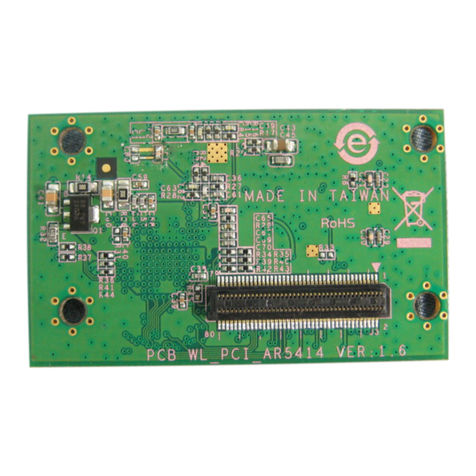
Moxa Technologies
Moxa Technologies WAPA003 user manual

Bosch
Bosch ReadykeyPRO LNL-1200 Quick reference guide
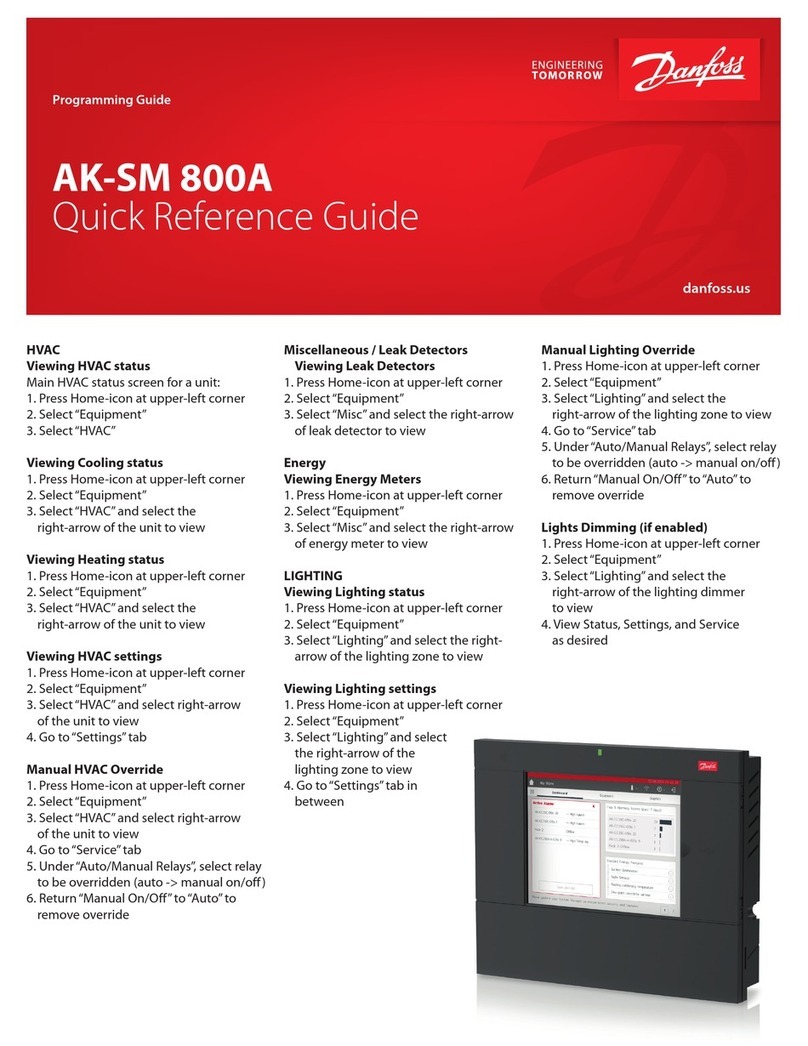
Danfoss
Danfoss AK-SM 800A Quick reference guide

Flashcut CNC
Flashcut CNC Stingray Hardware and installation manual
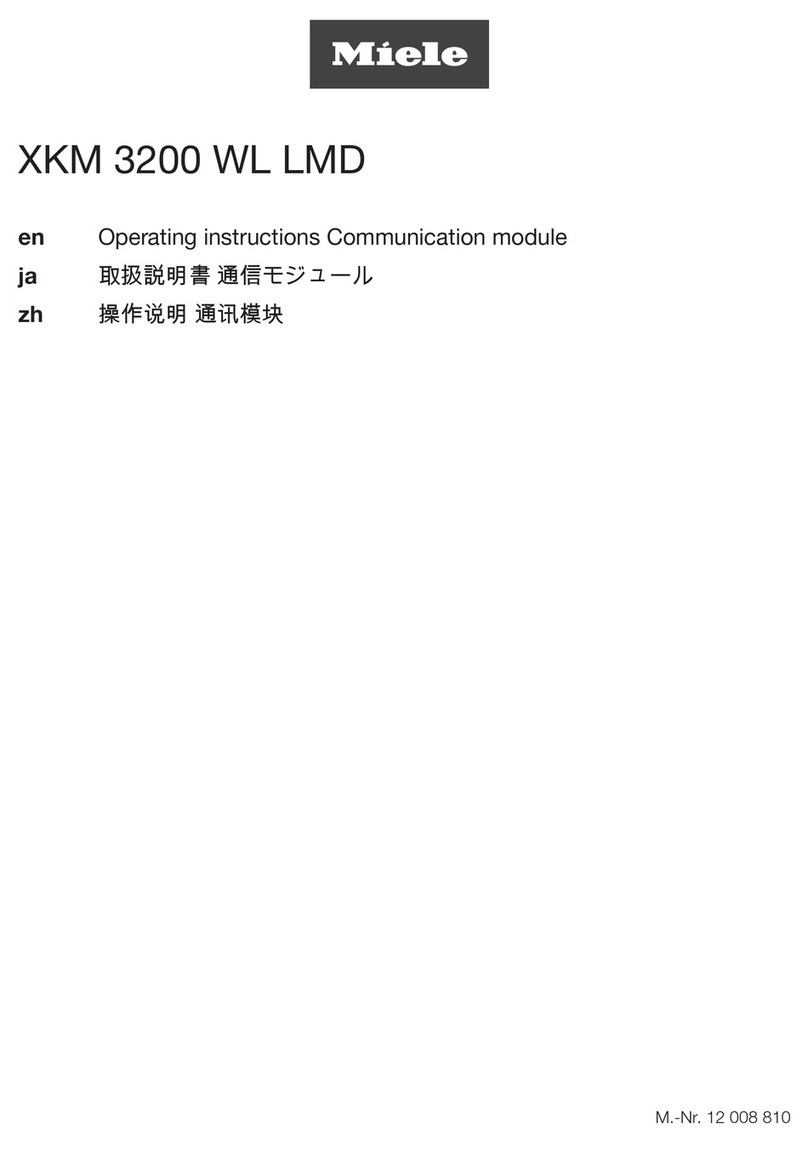
Miele
Miele XKM 3200 WL LMD operating instructions
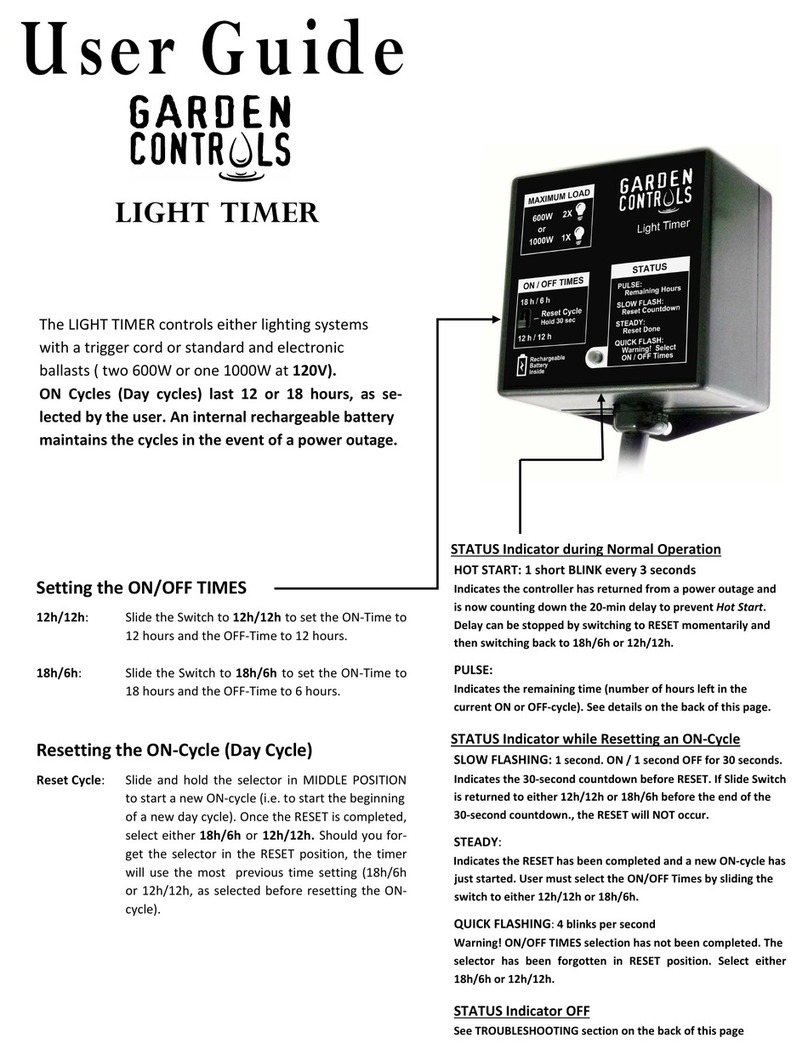
Garden Controls
Garden Controls LIGHT TIMER user guide

Cedar
Cedar BRX+ owner's manual
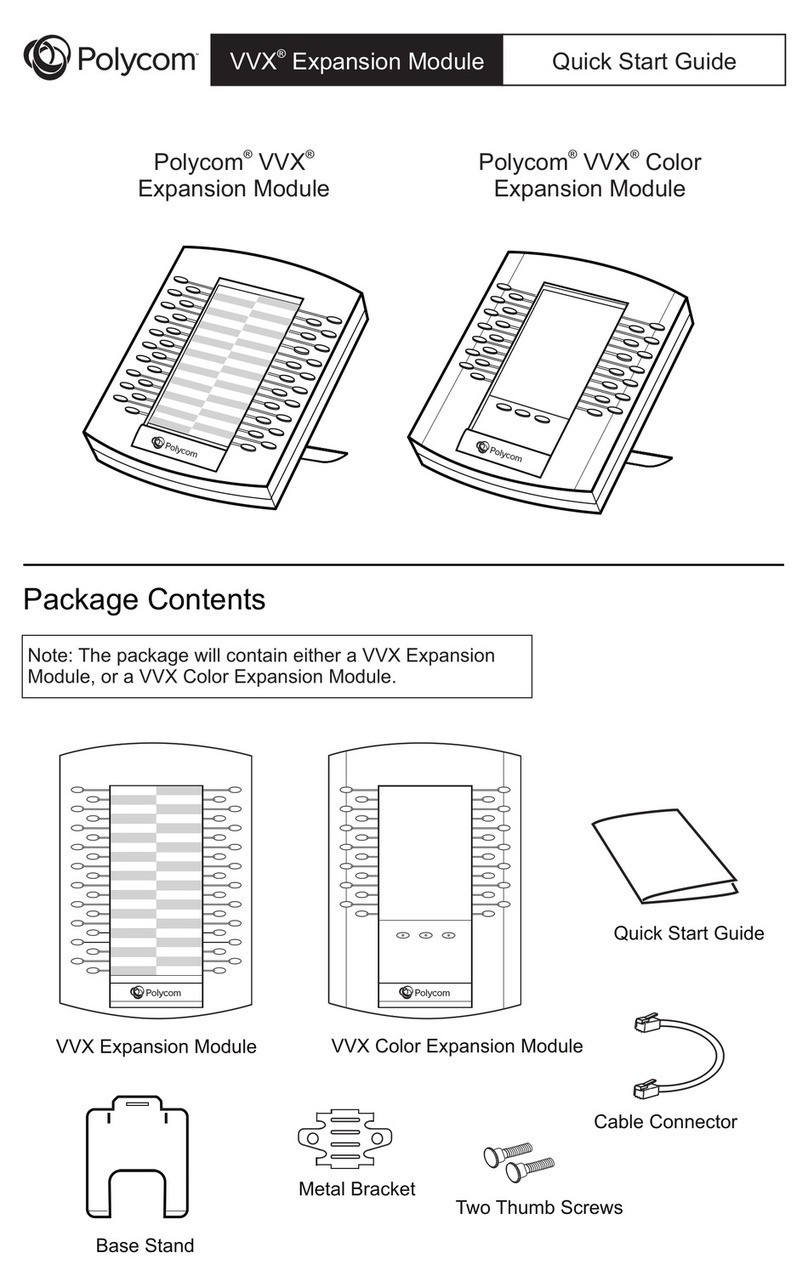
Polycom
Polycom VVX Expansion Module quick start guide
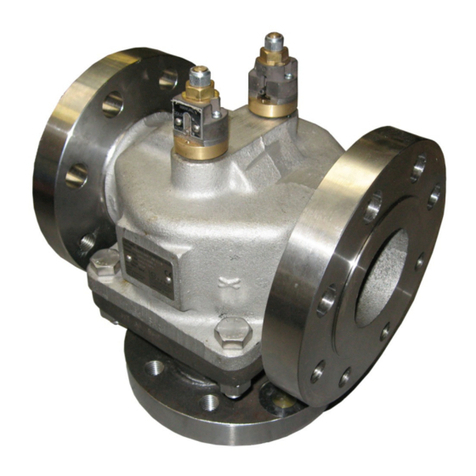
AMOT
AMOT B Series Installation, operation and maintenance manual
Freescale Semiconductor
Freescale Semiconductor TWR-P1025 Hardware user's guide
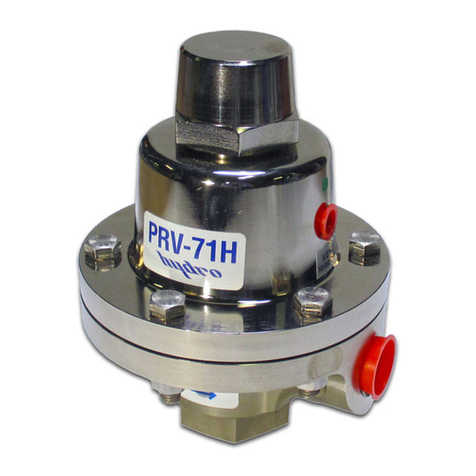
Hydro Instruments
Hydro Instruments PRV-71H Series Operation and maintenance manual
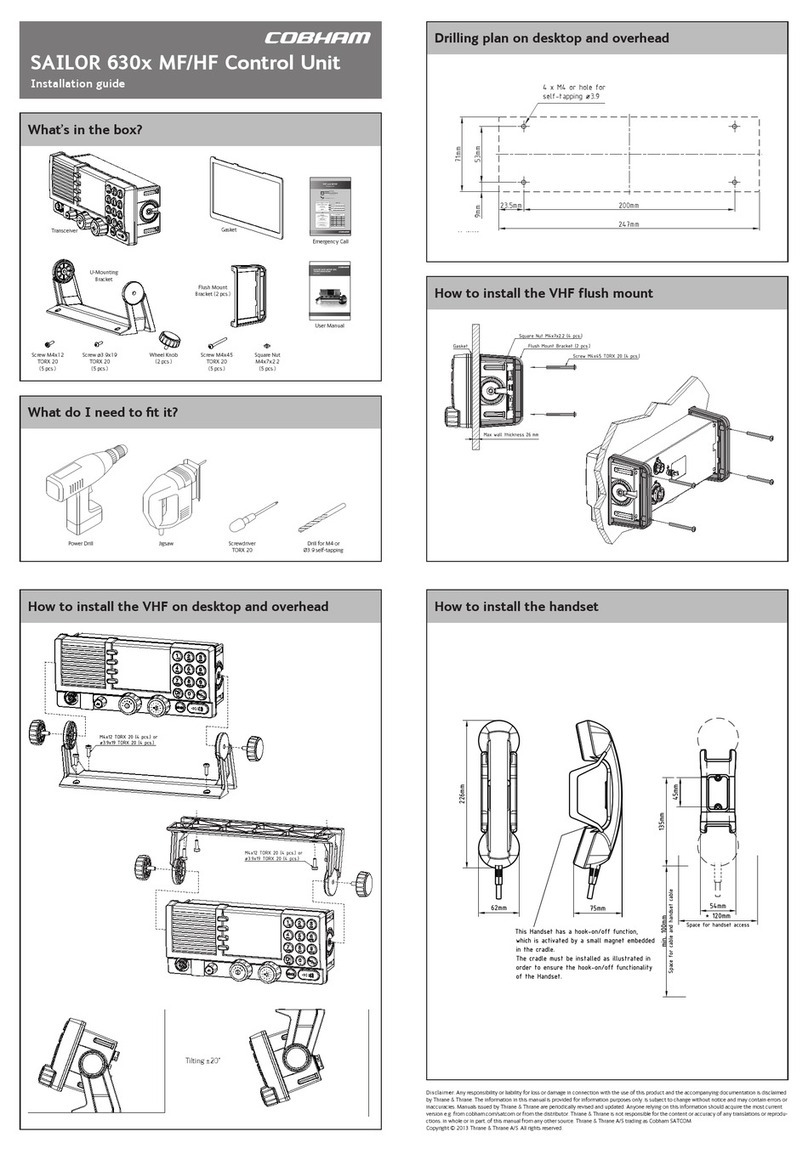
COBHAM
COBHAM SAILOR 630 series installation guide
